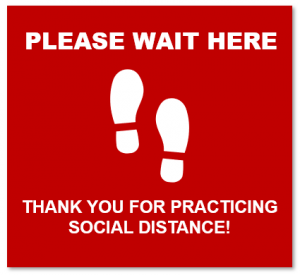Re-opening Retail Pharmacy: Tips to Help You Prepare

With stay-at-home orders starting to lift, restrictions on businesses and public places easing, and states implementing re-opening phases, many pharmacies are left wondering just how their business can resume “normalcy” and open their doors back up to their patients and community.
For the retail pharmacies who have closed their doors during this unprecedented time and are considering re-opening to the public but are unsure about how to go about it safely and efficiently, we have you covered! Following the CDC, here are 5 tips to help your pharmacy prepare for its re-opening.
Tip 1: Develop Appropriate Policies & Continue Good Hygiene
It is important to develop and implement appropriate policies, in accordance with Federal, State, and your local regulations. Make sure your pharmacy lays out guidance and utilizes best practices, regarding:
- Social distancing and protective equipment, including facemasks.
- Temperature checks.
- Testing, isolating, and contact tracing (if applicable).
- Sanitation and disinfection of common and high-traffic areas.
In the interest of the public’s health and to maintain safe behavioral practices, make sure your staff is following the recommended CDC guidelines when it comes to good hygiene:
- Washing hands with soap and water or use hand sanitizer, especially after touching frequently used items or surfaces.
- Avoid touching your face.
- Sneeze or cough into a tissue, or the inside of your elbow.
- Disinfect frequently used items and surfaces as much as possible.
- Strongly consider using face coverings while in public, and particularly when using mass transit.
- Staying home when sick.
Tip 2: Protection for Employees and Patients
Pharmacists and pharmacy technicians should always wear a facemask while they are in the pharmacy for source control. In addition to following workplace guidance, pharmacy staff should:
- Limit the number of patients in the pharmacy at any given time to prevent crowding at the pharmacy counter or checkout areas.
- Provide hand sanitizer containing at least 60% alcohol on counters for use by patients and have sufficient and easy access to soap and water or hand sanitizer for staff.
- Pharmacists who are providing patients with chronic disease management services, medication management services, and other services that do not require face-to-face encounters should make every effort to use a telephone, telehealth, or telepharmacy strategies.
- Discontinue the use of magazines, close self-serve blood pressure units, and other shared items in pharmacy waiting areas. Ensure that the waiting area is cleaned regularly.
- Encourage all prescribers to submit prescription orders via telephone or electronically.
 Tip 3: Put Barriers and Signs in Place
Tip 3: Put Barriers and Signs in Place
To minimize close contact, consider using engineering controls where the patient and pharmacy staff interact, such as the pharmacy counter:
- Use signage/barriers and floor markers to instruct waiting patients to remain 6 feet back from the counter, from other patient interfaces, and other patients and pharmacy staff.
- To shield against droplets from coughs or sneezes, install a section of clear plastic at the patient contact area to provide barrier protection (e.g., plexiglass type material or clear plastic sheet).
- Configure a pass-through opening at the bottom of the barrier for people to speak through or to provide pharmacy items.
Tip 4: Handling Prescriptions and Payments
After a prescription has been prepared, the packaged medication can be placed on a counter for the patient to retrieve, instead of being directly handed to the patient. Other strategies to limit direct contact with patients include:
- Promote the use of self-serve checkout registers and clean/disinfect them frequently. Encourage the use of and have hand sanitizer and disinfectant wipes available at register locations.
- Avoid handling insurance or benefit cards. Instead, have the patient take a picture of the card for processing or read aloud the information that is needed (in a private location so other patients cannot hear).
- Avoid touching objects that have been handled by patients. If the transfer of items must occur, pharmacy staff should wash their hands afterward with soap and water for at least 20 seconds or use an alcohol-based hand sanitizer containing at least 60% alcohol. They should always avoid touching their eyes, nose, or mouth with unwashed hands.
Tip 5: Continue Offering Free Delivery, Curbside/Drive-Thru, & Texting Services
Promote social distancing by diverting as many patients as possible to drive-through windows, curbside pick-up, or home delivery, where feasible. Encourage patients, especially those who need to take extra precautions to use alternate methods to pick-up medication such as:
- Home delivery of medications.
- Call for curbside/or drive-through services (large, outdoor signage so patients can easily understand your protocol can be useful).
- Having someone else who is not at a higher risk of severe illness pick up medications for them.
Also, include text or automated telephone messages that specifically ask sick patients to stay home and request home delivery or send a well family member or friend to pick up their medicine.
Closing Thoughts
No one pharmacy should feel pressured about when/how to re-open their business. When you feel the time is right, alliantRx and our partners are here to help. We appreciate your support and the continued care you have provided to your patients and the public during this unusual time. If you have any questions, please connect with us.
For more Coronavirus pharmacy and patient resources, please visit our COVID-19 toolkit.
